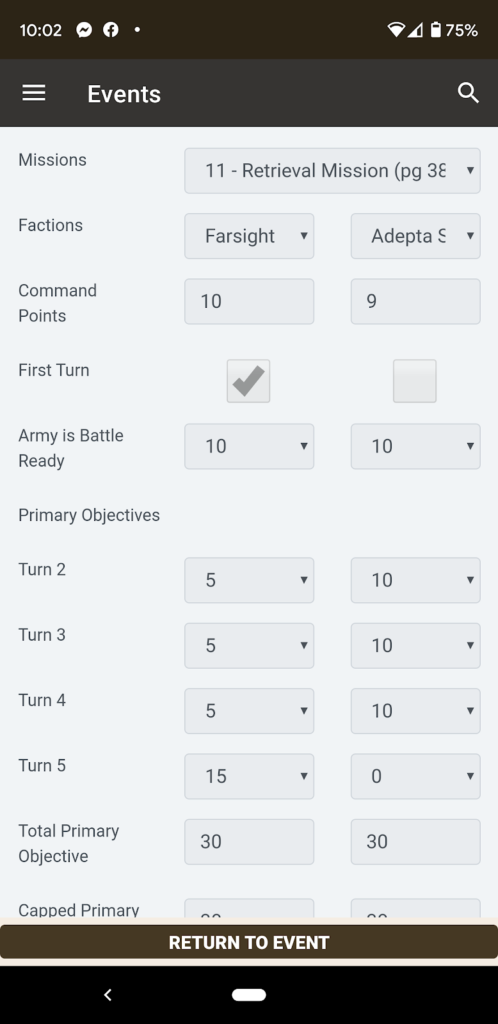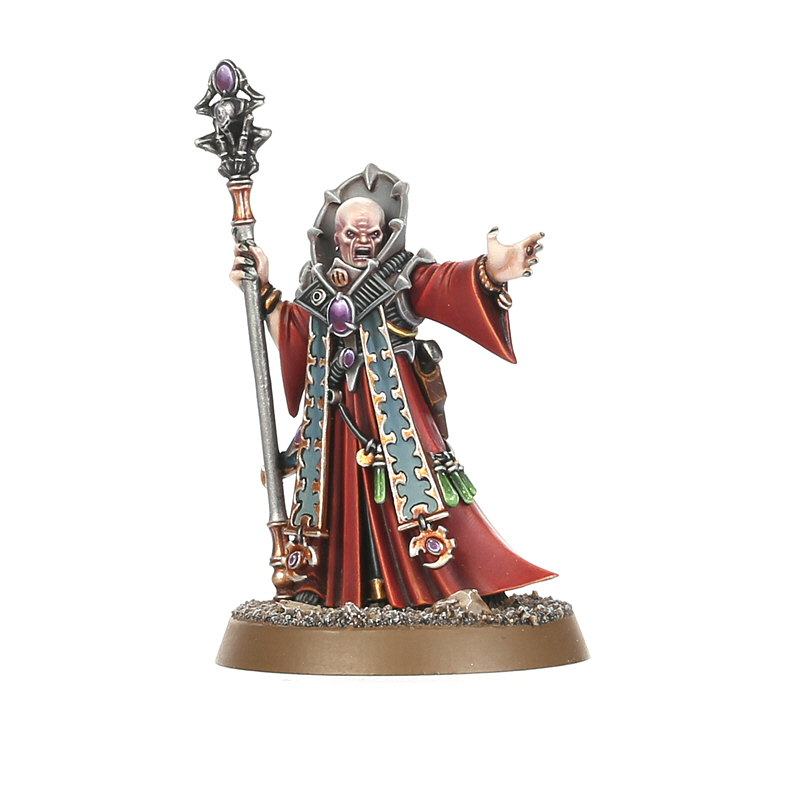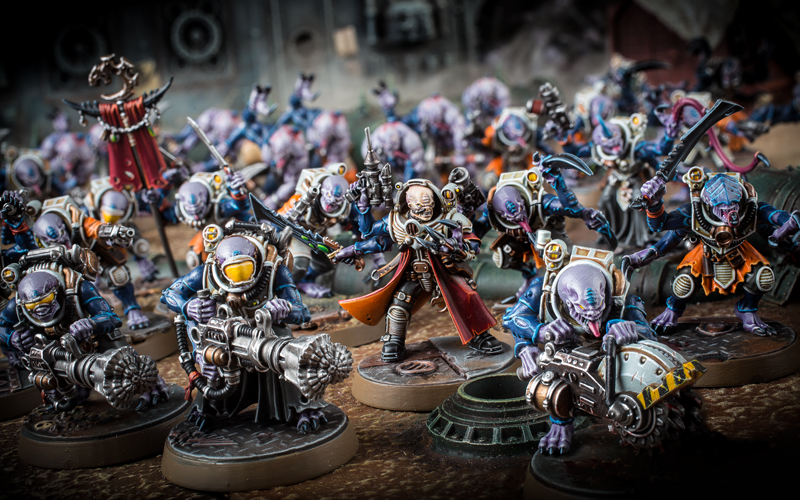As a member of many prestigious Competitive 40k Groups, the number one topic I see brought up is a person asking if the other members of the group think that their newly developed army list is competitive. While there is nothing wrong with getting feedback on an army list when getting started with a faction it is not the most important thing a player should focus on when dipping their toe into the giant ocean of starting a new 40k army. The reality is building a 40k army is an extremely expensive and time consuming task. By only focusing on the units that are currently broken, or performing well, players can become disgruntled when their army suddenly “sucks” after a GW points change or rules tweak makes their all star unit into something less valuable (pour one out for the 30 Abberents sitting in my garage).
This article is going to focus on the area that a player should zero in on when picking up a new army they plan to compete with at the tournament level. While this article is going to use Genestealer Cults (shocker) as an example, this same line of reasoning can be applied to any faction in 40k. It doesn’t matter if your army is 200 Neophytes or 10 Custodes because regardless of your army composition it will need to score points on the tabletop to win games. Players generally understand how their army is going to score Primary points prior to getting a game started, but some players give very little thought toward which secondaries their army can successfully score game in and game out. It is not enough to pick one favorite secondary and hope your opponent’s army list will guide the other secondary choices. This may work two out of every three games, but there are certain, very popular, army lists in the tournament scene where picking secondaries is a nightmare.

Against these well constructed army lists it becomes evident who did their homework in the planning stages of playing their army, and who just posted their army list online to get a ton of feedback that varies greatly in its usefulness (that’s a nice way of saying usually its bad). Thankfully, GW has made picking Secondaries simple by breaking them into categories and limiting a players choice to only one from each. By looking at each category in a vacuum it becomes easier to have 2, or even all 3, secondaries picked for your army before you even drive to an event.
GSC are an extremely mobile, fragile, and hard hitting melee army, and that is exactly what a player needs to keep in mind while taking a look over the Secondary categories.
Battlefield Supremacy- GSC is extremely well suited for any of these secondaries through our superior mobility and board control, but the real question here becomes Engage on All Fronts or Behind Enemy Lines? Domination is just too risky with how fragile GSC are, and both Engage and Behind Enemy Lines provide safer options. Engage is undoubtedly safer, but much harder to score over 10 points by being in all table quarters. Behind Enemy Lines can be extremely effective if your opponent’s army lacks a strong back field screen, and this secondary scores faster at 4 points per turn. Assuming my opponent’s army is not built to control their entire deployment zone my nod goes to Behind Enemy Lines for the potential of 12 secondary points for completing this secondary over just three turns.
No Mercy No Respite- “Nooooot so fast GSC”, GW said during their last FAQ. Prior to the change in While We Stand We Fight GSC had a solid option in this category, but now that our most expensive unit will most likely be an Acolyte squad (whose job is to die for the 4 Armed Emperor!) I would advise looking elsewhere for a standby secondary pick.
Purge the Enemy- With the change to Bring It Down these secondaries can be less obvious on when to pick them. I’m not going to insult your intelligence by telling you when to pick Titan Hunter, but when to pick Assassinate can be a tricky decision. Many army lists are running with few characters than they did in 8th Edition, but some armies still have enough characters to make this Secondary worth it. Oh, and never ever, under any circumstances pick Cut Off The Head. 12 points for killing their Warlord Turn 1?! Come on GW!
Shadow Operations- Here we go! Deploy Scramblers is an automatic 10 points for an army with a 1CP strat to put a unit back in reserves at any turn, but in a close game, those missed 5 points can make a huge difference. Raise Banners is risky for an army that struggles to hold the same objectives throughout the entire game. I find during my GSC games I give up my home objectives late game through attrition as my deep striking Acolytes take my opponent’s objectives. Teleport Homer and Investigate Sites give your opponent options to deny them by destroying a unit (not a hard task against GSC) or by just having a model within 6 inches of the center of the board. These are seriously risky and need a solid plan before picking them before a game.
Warpcraft- Virtually every GSC army is going to have a psyker in a Patriarch (so actually you don’t HAVE to have a Patriarch, but if you are playing without one just play Guard you traitor). Mental Interrogation can be a solid choice, but GSC is limited in our number of casters. Remember, (because I did not while writing this article) that a psyker must choose between casting their powers or performing a psychic action from a secondary. Being in the position to choose between Might from Beyond or Mental Interrogation is not a position I would want to be in, so weight this carefully during army construction. Pierce the Veil is a sneaky good GSC pick against those same armies who also make Engage on All Fronts a good pick. A single psyker can get 8 points for sure doing this action twice. 15 points for 4 times? I believe in you and I’m so proud you tried little Magus.

From this Secondary breakdown it is clear GSC have a few solid secondaries in their back pocket in Engage, Behind Enemy Lines and Deploy Scramblers. With this knowledge it will become much easier to shape an army list to find that third Secondary. Your army can plan to buff it’s number of casting attempts with the Crouchling relic or the Psyche of the Cult stratagem to ensure the psychic Secondaries are an option. This doesn’t even take into account the mission specific Secondary which GSC are generally decent at scoring.
Breakdowns of the Secondary choices have been done by many different content providers out their, but it is important for each individual player to analyze their specific army and their specific play style to identify Secondaries that they are most comfortable with. After making choices an army list begins to take shape through the units you are guided to through the abilities needed on the table in order to accomplish Secondary missions.
Good luck out there and I look forward to seeing those army lists on social media!


great artical on top of everything you covered I do really hope/expect GW to polish up the gsc rules and points again in the 9th ed codex alot of things that make them unique have been nerfed or removed altogether as per usual GWs knee jerk reactions to a faction that was doing well in its infancy just like ever other new faction it needed more time for players to get used to playing against it. A good example is a plan generations in the making one use only come on lol when my marine counter part can literally play transhuman every phase lol
Thanks! Yea, the difference between these 9th Edition books and the 8th Edition ones are going to start to become more and more obvious as the 9th Edition Codexes continue to come out. I do also play Necrons and, I have to say, if GSC get the attention and re-work that Necrons received I will be a happy man.